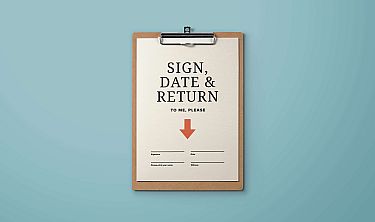“If a marketer is consistent with both their online and in-person branding, they are known as credible, predictable, reliable and trustworthy.” —Anne Pryor
Anne Pryor is a nationally recognized online brand strategist, top 10 LinkedIn trainer, and inspiring speaker. She has coached and trained over 85,000 people and has written more than 7,500 LinkedIn profiles. She has also helped me rethink and refine my own online brand.
We asked Anne to share advice for independents who’d like to polish their LinkedIn profile. Our conversation got to the core issues of understanding your purpose, your goals, and how you’re perceived.
Be Real and Know Yourself
Pryor says people come to her because they want a deeper, more meaningful career. To get there, she says, you have to know what you want to do and who you want to serve. Ask yourself these questions:
- What do you believe?
- Are you acting out your ego (your false self) or your essence (your true self)?
- Are you allowing yourself to be vulnerable?
- Are you setting clear intentions for your future?
If you’re guided by your essence, not your ego, you’re more likely to work from a foundation of love, gratitude and lifting others up.
Then, she says, consider how you’re presenting yourself. Could you describe your personal brand in 7 words? If you don’t think you have a brand, ask a few friends to write a couple of sentences about what you’re known for. You’ll likely see patterns — that’s your current brand.
Get to the Core of Your Real Reason
What are your clients hiring you for? If you’re a marketer, you weren’t hired to write newsletters; you were hired to engage with the audience. “That’s what clients want from marketers — the insights they can bring, beyond the tactics,” Pryor says. In the same vein, executives don’t hire Pryor because they care about LinkedIn; they hire her because they want to look great everywhere, including online. Thinking about what you’re being hired for can help you position yourself more clearly, focusing on the value and results you bring.
To learn more on this topic, Pryor recommends the book "Competing Against Luck" by a group of co-authors led by Harvard professor Clayton Christensen. The book’s “jobs to be done” theory centers on understanding what clients are hiring you to do. Pryor says the theory has changed the way she helps clients build their brands and online visibility.
Know What Your Customer Wants, and What Their Customer Wants
Pryor talked about working with one marketer who wanted to get found for marketing roles on LinkedIn. She was using the phrase “omnichannel” to describe her work in her profile, but as she discovered with Pryor’s help, her customers were looking for masters of “modern marketing.” Making that simple keyword switch (and putting herself in the shoes of her customers) had an immediate, dramatic effect on the marketer’s LinkedIn results.
Are you using the right language to get found? Beware of jargon that your clients may not think to search for! You can impress them later - right now you need to be visible.
Take Control of Your Online Brand
“Everyone should know that if you don’t manage your brand, you’re leaving it up to others,” Pryor says. As your personal brand online becomes increasingly important, she says, “I don’t think you want to leave it up to chance.”
Upgrade Your LinkedIn Profile
Once you’re ready to rework your LinkedIn profile, focusing on your customer’s perspective, try these tips from Anne:
- Complete your entire LinkedIn profile. This might seem obvious, but many professionals have a bare-bones profile. Adding a great professional photo is key, or you’re likely to be overlooked.
- Make it easy for people to contact you. Put your email address right in your Summary and Contact Info.
- Add media-rich work samples. This is especially important for marketers. Consider adding videos, PowerPoints, white papers, writing samples and case studies to your profile. This is even more crucial for independents.
- Add projects. This is a fairly new LinkedIn section, but it’s an important opportunity to share your work. Use keywords strategically and share specific ROI and results, but be careful not to give away any proprietary information. Remember to tag the team members you worked with.
- Invite clients to recommend you. When you ask for a recommendation, be specific about what you’re looking for and cite specific examples of successful projects. The first six words are the most important.
For more ideas, get Anne’s LinkedIn profile checklist, and learn more about Anne’s coaching and courses.





